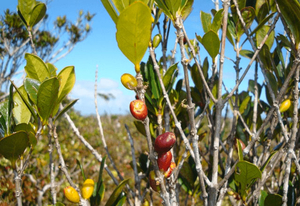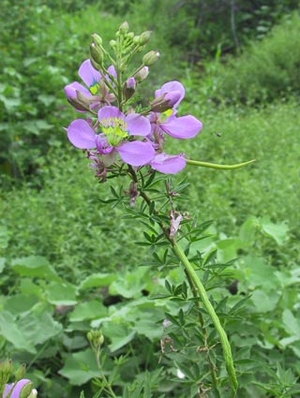About SADC Crop Wild Relatives
SADC Crop Wild Relatives started off in January 2014 to address the “In situ conservation and use of crop wild relatives in three ACP countries of the SADC region” as the full project title explicates. This three-year project is supported by the Secretariat of the African, Caribbean and Pacific (ACP) Group of States through its ACP-EU Co-operation Programme in Science and Technology (S&T II) Its overall objective is to enhance link between conservation and use of CWR as a means of underpinning regional food security and mitigating the predicted adverse impact of climate change.
The specific objectives are therefore to enhance the scientific capacities within the partner countries to conserve CWR and identify useful potential traits for use to adapt to climate change, and to develop exemplar National Strategic Action Plans for the conservation and use of CWR. Read below about the challenge we address, the focus of the project, the methods used and envisaged outputs.
Challenge
Crop wild relatives (CWR) are gene providers for developing adapted crop varieties that enable farmers to cope with all kinds of adverse conditions, for example those induced by climate change. These CWR species are often neglected and thus threatened in the wild, due to ignorance of their value to agriculture by policy-makers, decision-makers and ecologists. Also breeders and farmers, in particular, are unaware of these resources and often lack the skills to mine the genetic diversity from CWR for use in novel varieties.
Currently, there is a lack of national leadership with regards to the coordination of activities between the agriculture and environment sectors related to the conservation and sustainable use of CWR. Consequently, CWR are not taken into account in environment policy planning processes and their conservation is not given high priority in protected area management plans. The agriculture and environment sectors seldom work together.
This problem is further compounded by the low capacity among national-level scientists as regards tools for assessing the occurrence of CWR and the potential value of their use for food and agriculture. There is an urgent need to bridge this gap to ensure that these wild resources are recognized and their potential for use realized.
Focus
Mauritius, South Africa and Zambia, three diversity-rich countries representative of the different ecogeographic areas within the Southern African Development Community (SADC) region, are engaging in active in situ conservation and use of CWR in their respective countries.
The project will strengthen the scientific capacities of national environmental and conservation scientists and managers, as the effective in situ conservation and use of CWR requires that sufficient knowledge about these resources and their occurrence exists, that threatened populations of priority CWR are adequately conserved to ensure their availability for use, and that skills and technologies are available to use these resources in research and breeding programmes.
Mauritius, South Africa and Zambia will develop exemplar National Strategic Action Plans for the in situ conservation and the use of CWR, which will involve all the relevant national stakeholders and enable policy and decision-makers to better target conservation and use the actions.
Methods
Based on a detailed training needs assessment, the identified needs will be addressed through regional training workshops and in-country, on-the-job training to strengthen the scientific and technological capacities required for the assessment, monitoring, prioritization, conservation and use of CWR.
Tools and methods, such as field surveys, software and predictive characterization guidelines, necessary to assess and characterize the CWR of target crops identified by the countries, will be provided so as to increase the scientific knowledge of national research organizations, conservation agencies and relevant governmental agencies about the diversity of CWR and its potential use in crop improvement. The project will transfer predictive characterization approaches, such as the ecogeographical filtering method, to allow breeders and scientists to search for adapted traits in CWR.
A framework for prioritizing actions, such as ecogeographical studies, will be created which, when implemented, will identify germplasm with climate change resilient traits and make it available to breeders and farming communities. Exemplary national strategic action plans will be developed, which will involve all the relevant national stakeholders to enable policy and decision-makers to better target conservation and use the actions. National policy-makers from the agriculture, forestry and environment sectors will be informed about the value of CWR so as to ensure their support and engagement for undertaking conservation interventions to safeguard it.
Achieved outputs
- 41 scientists from 14 SADC member states were trained in in situ conservation and use of CWR by the project.
- An interactive toolkit for conservation of CWR is being published.
- Annotated checklists have been developed in Mauritius, South Africa and Zambia and CWR have been prioritized for conservation in all three countries. Checklists and occurrence data are available from the project dataverse.
- Hotspots of priority CWR sites have been identified for in situ conservation - including protected area establishment - and ex situ collection in each partner country as well as at SADC regional level.
- Three national strategic action plans (NSAP) for CWR conservation and use have been developed.
- A draft strategy for CWR conservation at regional SADC level has been developed.
- CWR were included in the revision of National Biodiversity Strategy and Action Plans (NBSAP) and implementation plans for target 9 Global Strategy for Plant Conservation (GSPC).

